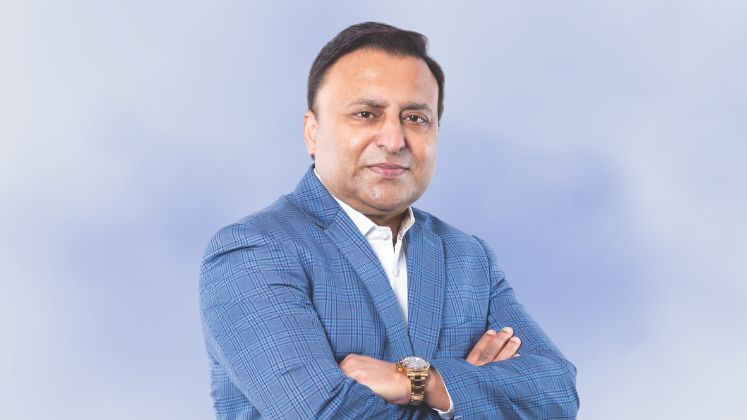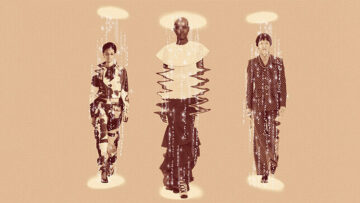What happens when a traditional garment manufacturer stops thinking like a factory and starts thinking like a tech company? At Sparrow Group, that shift is already well underway.
From AI-powered fabric optimisation for Marker, lay planning and cutting operation and real-time production tracking to RFID-enabled traceability and laser-guided cutting systems, Sparrow is rewriting the rules of manufacturing.
With over 17,000 employees across multiple facilities, including its flagship Sparrow and Crown factories, the Group generates over US $ 250 million in annual revenue and produces approximately 30 million garments per year, with an additional 10 million pieces from its Jordan Joint Venture operation.
The company supplies top-tier global retailers such as GAP, Banana Republic, Marks & Spencer, American Eagle, Ann Taylor, Mango, J. Crew, Chico and many other top brands of the world. Sparrow group specialises in woven fashion tops, bottoms, outerwear, shirts, jackets, ladies blouses, dresses, loungewear and trousers. Its competitive strength lies in embracing innovation for creating new designs, sampling presentation for selling its own developed styles and advanced technologies’ usage and smart manufacturing.
In this exclusive conversation with Apparel Resources, Shovon Islam, MD, Sparrow Group shares how Sparrow’s bold investments in automation, data integration and sustainability tech are transforming one of the country’s largest apparel exporters into a model for Industry 4.0 in fashion.
AR: How are you leveraging AI and automation in fabric optimisation and cutting operations?
Shovon Islam: Fabric accounts for nearly 60–65% of the total cost in garment manufacturing, so optimising its usage is crucial. Every day, we produce between 180,000 to 250,000 pieces of multi-product garments across five production divisions in five factories. Managing multiple fabric types and variations manually are error-prone, especially since today’s fabrics, most of them stretch-based, behave differently under tension and relaxation. Some fabrics require 24 hours to 48 hours of relaxation before cutting; others require less. Also, there are different types of shrinkage and handling, particularly in case of women’s man-made synthetic fabrics. Relying on human judgment can lead to inconsistencies and wastage and sometimes it is impossible to achieve the desired result for fashion garments. Now we rely on software like Astro Cutting Suite, which syncs with our production planning software to automate layout and cut sequencing. Astro uses real-time input from the planning team to determine factors such as which table to use, which styles to lay when, whether a specific style should be cut manually or by machine and estimated completion time for each layout. This software is integrated with our self-developed, state-of-the-art ERP system called I-THREAD.
Also, in manual cutting, markers are not always set, but with machine cutting, the fabric is laid, scanned and cut with minimal human interference, except for quality assurance to ensure no creases. These German-origin machines, valued at nearly US $ 1 million each, operate 24/7 to maximise utilisation. Newer systems coming out are even better with laser-guided AI-driven engine to ensure yarn edges do not fray post-cutting, an issue common in earlier set-ups.
This AI-integrated planning has drastically improved our operational efficiency. Where our cutting efficiency once stood at 30-40%, now it aligns more proportionally with our sewing efficiency, which is around 70%. T h i s alignment has reduced the manpower needed to feed production and eliminate bottlenecks. We’ve made our biggest investments in pre-production activities: design, pattern making, sampling and cutting, which, in turn, drive overall production efficiency. The goal is flawless pre-production activities to reduce all errors, reworks and inefficiencies in production. Once production starts, the focus is on quality and efficiency and not on reworking delays.
AR: How do you detect production floor inefficiencies and ensure quality in real-time?
Shovon Islam: We’ve deployed both machine-integrated and custom-developed software solutions integrated with our ERP system to track production activity and respond to floor-level issues in real time. On each line, workers use smart systems, sometimes just a button press or sensor-enabled machines like Juki smart sewing machines which automatically communicate production data to a centralised system.
This helps us monitor each operator’s output, detect stoppages and identify root causes without waiting for a floor supervisor to physically intervene. If a machine slows down or fails, the system flags the issue and our industrial engineers can immediately intervene. This rapid detection eliminates downtime and ensures smoother flow across our more than 100 production lines. The key is to eliminate any WIP build-up at any point in production line to ensure every hourly target is achieved by every machine and finally at the end of the line.
Additionally, we monitor defect rates using DHU (Defects per Hundred Units) as a key performance indicator. The software not only records but also suggests trend-based insights, helping our quality assurance team respond faster.
While full automation is still impractical, especially in fashion garments where aesthetic judgment is key, we’re using intelligent automation to support human decision-making. It’s about combining machine precision with human expertise to build a smarter, more responsive factory floor.
We have also made significant investments in Radio-Frequency Identification (RFID) technology and are currently in the initial phases of implementation across our production lines, rolling it out line by line.
The RFID chips we use are sourced from China and India and are designed to be water-resistant, which is critical for garment processing environments. This durability ensures that tags survive all stages of production without data loss.
| “On each line, workers use smart systems, sometimes just a button press or sensor-enabled machines like Juki smart sewing machines which automatically communicate production data to a centralised system.” |
AR: Since you invest in so many technologies, how do you determine which innovations are truly worth scaling?
Shovon Islam: We have experimented with various technologies on the factory floor, including sensors and hanger systems intended to streamline material flow and reduce manual handling. However, these did not deliver the flexibility required for our dynamic production layouts and frequent changeover due to the nature of our high fashion business. The hanger systems, in particular, posed challenges in adapting to layout shifts, so we ultimately found them ineffective.
Technology adoption is a continuous process of trial and error. We eagerly embrace new solutions but also learn to discard those that don’t fit operational realities. This iterative approach is essential in a fast-moving industry like garment manufacturing, where floor layouts, production volumes and styles frequently change.
AR: How is Sparrow hedging against raw material cost volatility?
Shovon Islam: We adopt a multi-pronged approach to manage raw material price fluctuations. For instance, if fabric costs rise, we typically don’t like to pass these increased costs to buyers but offer alternative fabric mills and fabric type to manage cost. But ultimately buyers/ brands need to take a call regarding the choice of raw materials after negotiating with us and raw materials suppliers. The goal is to produce the best garments at the best price. One example is switching fabric composition, for example, from 97% cotton and 3% elastane to other blends, as a strategic cost management method.
AR: Have you explored vertical integration to gain tighter supply chain control and improve margins?
Shovon Islam: No, we do not plan to pursue vertical integration. Instead, our strategic focus is on multi-product specialisation, which differentiates us from competitors who may not have advanced technology and expertise we possess. We offer one-stop shopping experience to brands and buyers for woven garments with our multi-product specialty.
We are investing heavily in high-end production capabilities and targeting small-quantity, high-value orders such as athleticwear. For example, we have fully automated shirt production lines, increasing capacity from 1,500 pieces to 2,200 pieces daily, a nearly 30% efficiency gain. Our goal is to further scale this to 4 million pieces a month while maintaining excellence in fabric and design innovation. We are integrating automation deeply within our pre-production processes.
Currently, we have established a presence in Jordan due to duty-free access to USA and have been able to use 90% workforce from Bangladesh. However, we do not plan to move to low-cost geographies broadly like Africa, as we believe Bangladesh still holds substantial opportunities for growth and investment.







